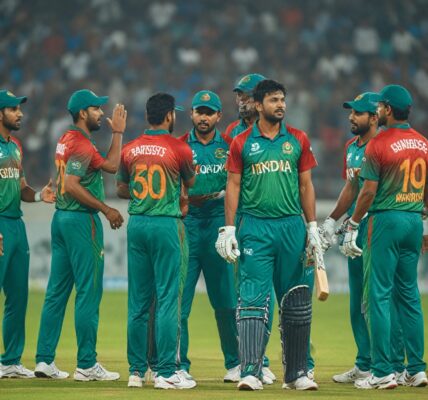Powerlifting in the Paralympics is a remarkable display of strength, determination, and resilience. Unlike traditional powerlifting, which involves three main lifts, Paralympic powerlifting focuses solely on the bench press. This adaptation makes the sport more inclusive, allowing athletes with a range of disabilities to compete at the highest levels.
The growth of Paralympic powerlifting has been extraordinary. From its humble beginnings to becoming a globally recognized event, the sport now showcases some of the world’s most powerful and determined athletes.
History of Powerlifting in the Paralympics
Powerlifting became part of the Paralympic Games in 1964, initially limited to male athletes with spinal injuries. However, the sport soon expanded, allowing athletes with different types of physical impairments to participate. By 2000, women’s powerlifting was introduced, marking a significant milestone in the sport’s development.
Key milestones in Paralympic powerlifting include record-breaking performances by athletes like Siamand Rahman, the first Paralympian to lift over 300kg. His incredible feats of strength have inspired a new generation of powerlifters to push beyond the limits.
Paralympic Powerlifting Rules and Regulations
Paralympic powerlifting has specific rules to ensure fair competition. Athletes must meet strict eligibility criteria, such as having a physical impairment that affects their lower limbs or hips. The sport is open to both men and women, and athletes are divided into weight classes to ensure a level playing field.
The competition format is straightforward. Each athlete gets three attempts to lift the heaviest weight possible. The winner is the one who successfully lifts the most weight in their category.
Differences Between Olympic and Paralympic Powerlifting
One of the key differences between Olympic and Paralympic powerlifting is the type of lift performed. While Olympic powerlifters compete in the squat, bench press, and deadlift, Paralympic powerlifters focus exclusively on the bench press. This adaptation allows athletes with lower body impairments to compete effectively.
Another difference lies in the equipment used. Paralympic powerlifters use specialized benches and lifting techniques to accommodate their disabilities, making the sport highly adaptive and inclusive.
Training for Paralympic Powerlifting
Training for Paralympic powerlifting is intense, requiring a combination of strength, endurance, and mental resilience. Athletes spend years honing their bench press technique, focusing on upper body strength and precision. Adaptive techniques, such as the use of assistive devices or modifications to training routines, are often employed based on the athlete’s specific needs.
Coaches and support staff play a vital role in the success of Paralympic powerlifters. They help design training programs, offer emotional support, and ensure that athletes maintain peak performance.
Notable Paralympic Powerlifters
Several Paralympic powerlifters have left a lasting impact on the sport. Siamand Rahman, mentioned earlier, is one of the most famous names in Paralympic powerlifting. His strength and determination have made him a global icon. Other notable athletes include Lucy Ejike from Nigeria and Amalia Pérez from Mexico, who have both set multiple world records in their respective weight categories.
owerlifting Classifications in the Paralympics
Paralympic powerlifting uses a classification system to ensure fair competition. Athletes are classified based on their impairment, which is assessed by a panel of medical professionals. This system ensures that athletes with similar levels of physical ability compete against each other, making the competition as equitable as possible.
Powerlifting Events in the Paralympics
Powerlifting at the Paralympics consists of men’s and women’s events, each divided into different weight categories. These categories allow athletes of all sizes to compete on equal footing. The number of events has increased over the years as more countries invest in the sport and encourage their athletes to participate.
Paralympic Powerlifting Equipment
Paralympic powerlifters use specialized equipment to accommodate their needs. The bench used in competitions is wider and more stable than a standard bench press, providing better support for the lifter. Additionally, athletes may use straps or other assistive devices to stabilize themselves during the lift, depending on their disability.
The Importance of Powerlifting in the Paralympic Movement
Powerlifting is more than just a sport; it’s a symbol of what athletes with disabilities can achieve when given the right support and opportunities. The sport promotes inclusivity and provides a platform for athletes to showcase their strength and determination on a global stage. Powerlifting embodies the Paralympic spirit of perseverance, hard work, and the pursuit of excellence.
Challenges Faced by Paralympic Powerlifters
Paralympic powerlifters face several challenges, both on and off the platform. Physically, they must overcome the limitations imposed by their impairments, while mentally, they need to stay focused and motivated despite the hurdles they encounter. Many athletes also face societal barriers, such as lack of access to training facilities and funding.
The Future of Powerlifting in the Paralympics
The future of Paralympic powerlifting looks bright. As the sport continues to grow in popularity, more countries are developing training programs and investing in their athletes. Innovations in adaptive technology may also play a role in enhancing the performance of powerlifters in the coming years, making the sport even more competitive.
How to Get Involved in Paralympic Powerlifting
Becoming a Paralympic powerlifter starts with a passion for the sport and a willingness to put in the hard work. Aspiring athletes can reach out to local clubs, organizations, or Paralympic committees to begin their journey. With the right training and support, anyone with a physical impairment can compete and achieve success in this thrilling sport.
Powerlifting in the Paralympic Games: A Global Perspective
Paralympic powerlifting is a global phenomenon, with countries like Iran, China, Nigeria, and Mexico dominating the sport. International competitions and regional events provide opportunities for athletes to showcase their skills and build a sense of community. The global nature of the sport continues to inspire future generations of powerlifters.




